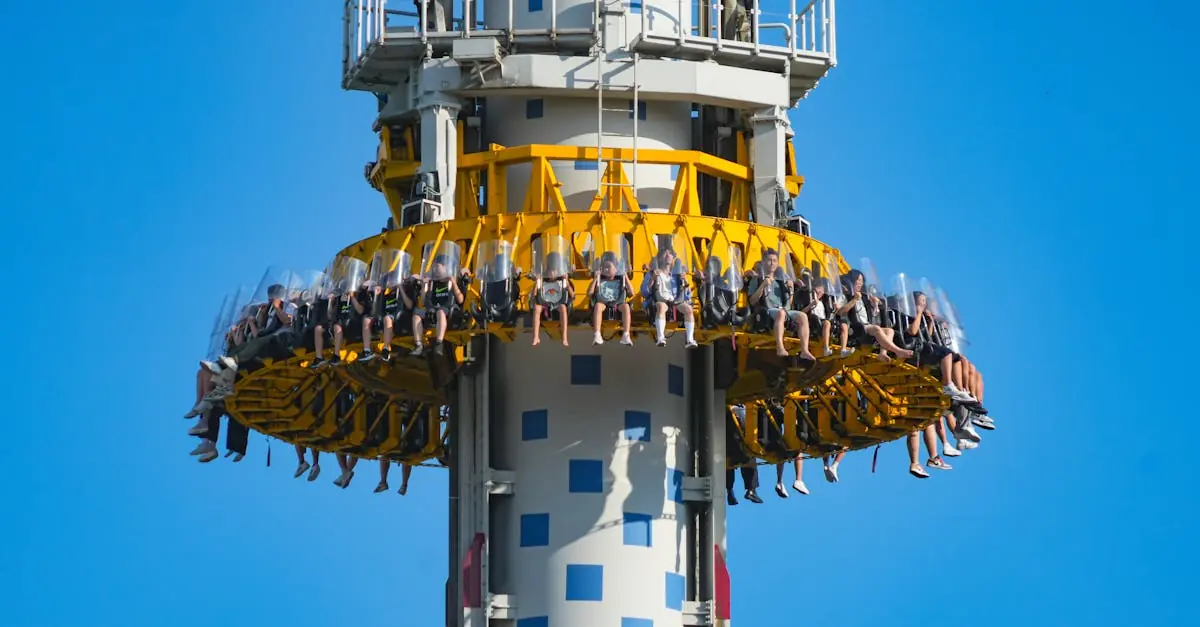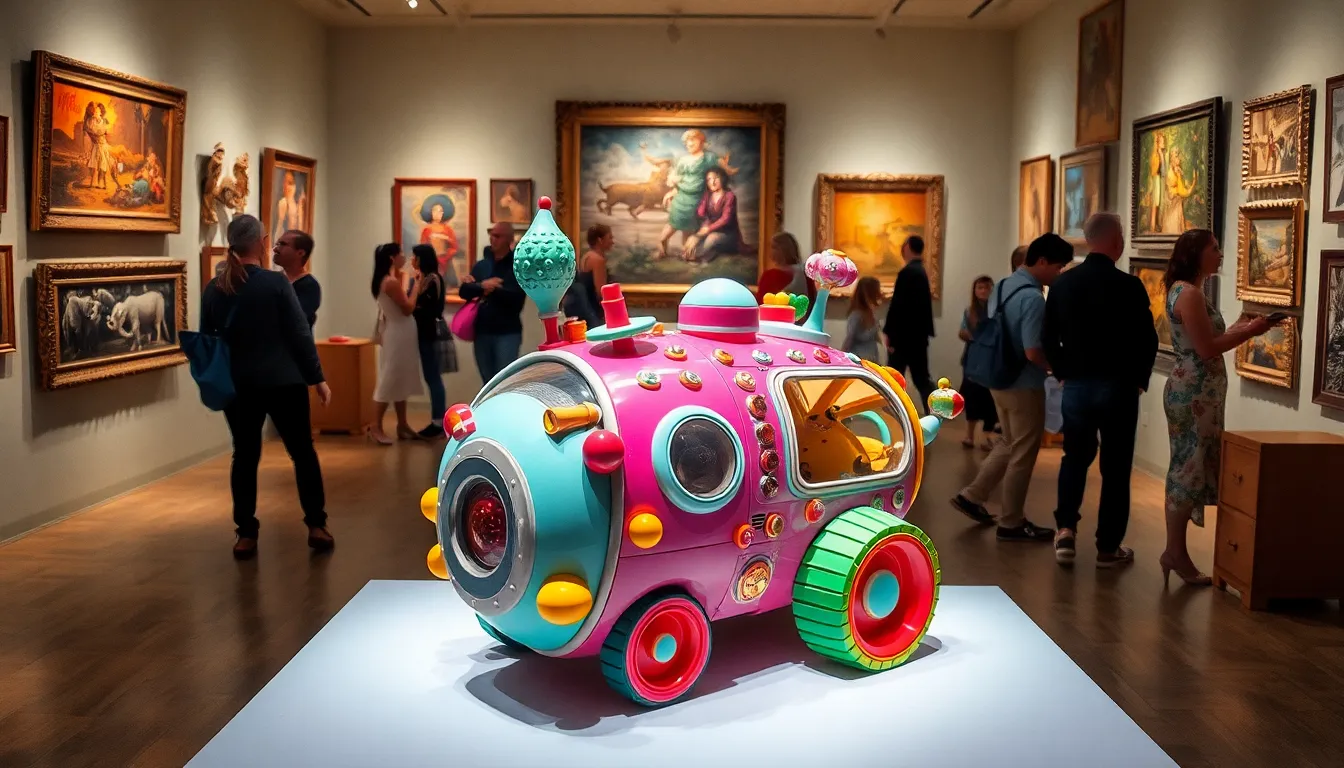When it comes to keeping the thrills rolling at an amusement park, maintenance isn’t just a checkbox on a to-do list; it’s the secret sauce that keeps the fun alive. Imagine a roller coaster that squeaks like a rusty door or a Ferris wheel that’s more wobble than whirl. Not exactly the adrenaline rush guests are looking for, right? That’s why a solid amusement park maintenance checklist is essential for ensuring rides are safe, clean, and ready to deliver unforgettable experiences.
Table of Contents
ToggleImportance Of Amusement Park Maintenance
Maintenance in amusement parks plays a crucial role in ensuring guest safety. Regularly checked rides and attractions lead to reduced accidents and injuries. Cleanliness and proper upkeep enhance overall visitor experiences significantly. Without thorough maintenance, operational issues can arise, leading to disruptions in service and customer dissatisfaction.
Staff trained in maintenance protocols can identify potential problems early. This proactive approach helps in preventing costly repairs and lengthy downtimes. Inspections must cover all equipment, including rides, structures, and safety systems. Well-maintained attractions attract more visitors, often leading to higher revenues. Positive reviews often stem from guests enjoying rides that function flawlessly.
The operational standards of amusement parks require strict adherence to safety regulations. Compliance with local laws and industry standards ensures ongoing licensing and operational legitimacy. Insufficient maintenance could result in reputational damage that affects future business. Engaging with safety audits enhances credibility and builds customer trust.
Furthermore, the visual appeal of the park depends on regular maintenance. Clean areas, well-painted rides, and manicured landscapes create an inviting atmosphere. Guests feel more comfortable in a park that prioritizes aesthetics alongside functionality. An effective maintenance schedule can improve customer retention through repeat visits.
Operational efficiency hinges on well-maintained equipment. Staff can focus on service improvements instead of addressing emergencies. Maintenance fosters a reliable experience, leading to customer loyalty. Overall, prioritized maintenance practices benefit both park operations and guest satisfaction.
Key Components Of An Amusement Park Maintenance Checklist
An effective maintenance checklist includes several critical components that ensure the safety and enjoyment of guests. Adhering to these elements plays a significant role in maintaining high operational standards.
Safety Inspections
Regular safety inspections must occur for all rides and attractions. Trained staff should evaluate mechanical systems, safety devices, and emergency protocols. Identifying potential hazards early reduces the risk of accidents. Documentation of inspection findings enhances accountability and compliance with safety regulations. Comprehensive maintenance logs help track recurring issues, ensuring timely repairs. Visual checks of ride components before opening prevent dangerous situations. Conducting safety drills prepares staff for emergency responses, prioritizing guest safety.
Equipment Functionality
Monitoring equipment functionality is vital for smooth operations. Routine checks should include mechanical elements, electrical systems, and control functions. Testing ride operations before public access ensures everything runs correctly. Performance metrics should align with manufacturer specifications. Timely servicing extends the lifespan of equipment and prevents major malfunctions. Evaluating ride capacity limits ensures guests enjoy a safe experience. Each operational issue recognized and resolved minimizes downtime and enhances guest satisfaction.
Cleanliness Standards
Maintaining cleanliness standards is essential for a positive visitor experience. Staff should routinely clean and sanitize rides, queues, and common areas. High-touch surfaces require frequent disinfection to promote hygiene. A clean environment enhances the visual appeal of the park, encouraging return visits. Regular garbage collection prevents unpleasant odors and maintains aesthetic standards. Establishing a cleanliness protocol helps ensure all areas remain inviting. Monitoring cleanliness levels can lead to higher guest satisfaction ratings and boosted park reputation.
Seasonal Maintenance Activities
Effective seasonal maintenance activities ensure rides and facilities remain safe and enjoyable throughout the year.
Pre-Season Preparations
Pre-season preparations focus on thorough inspections and testing. Maintenance teams evaluate mechanical systems, ensuring rides meet safety regulations. They conduct cleaning of all facilities and rides to promote hygiene and aesthetics. Staff review emergency protocols to ensure readiness in the event of an incident. Equipment checks extend to all operational aspects, including power systems and safety features.
Mid-Season Checks
Mid-season checks emphasize ongoing safety and functionality. Maintenance crews perform routine inspections, identifying any wear or damage. Monitor operational efficiency closely to prevent breakdowns during peak visitor times. Cleaning practices remain rigorous to uphold hygiene standards, fostering a welcoming environment. Staff also gather visitor feedback to address concerns proactively.
Post-Season Evaluations
Post-season evaluations are critical for future preparations. Assessments of ride performance and safety measures allow for necessary upgrades. Maintenance teams document all findings, creating a comprehensive report for operational improvements. Deep cleaning of all equipment and facilities is conducted to prepare for off-season storage. Final reviews of visitor feedback help identify trends for enhancement before the next season.
Best Practices For Implementing The Checklist
Implementing an effective maintenance checklist requires structured practices to ensure safety and satisfaction in amusement parks.
Training Staff
Training staff remains a cornerstone of maintenance success. Skilled personnel can identify and resolve issues quickly, directly impacting guest safety. Comprehensive training sessions cover ride operation, safety protocols, and emergency procedures. Regular refresher courses further enhance their knowledge and vigilance. Empowered employees are more likely to take initiative, resulting in early problem detection. Incorporating hands-on training with real scenarios prepares them for actual situations. A well-trained workforce ultimately leads to smoother operations and heightened guest experiences.
Keeping Records
Keeping detailed records is essential for effective maintenance management. Documentation of inspections, repairs, and staff training proves invaluable. Accurate records facilitate compliance with safety regulations and aid in identifying trends over time. Using digital tools allows for easier tracking and retrieval of information, streamlining communication among teams. Regularly updating these records ensures that potential issues are addressed promptly, reducing the risk of accidents. This organized approach fosters accountability and enhances operational efficiency, benefiting both staff and visitors.
Conclusion
Prioritizing maintenance in amusement parks is vital for ensuring safety and enhancing guest experiences. A well-structured maintenance checklist not only focuses on safety inspections and equipment functionality but also emphasizes cleanliness and operational efficiency.
By investing in trained staff and thorough documentation, parks can proactively address potential issues and maintain compliance with safety regulations. This organized approach fosters a welcoming atmosphere that encourages repeat visits and boosts customer loyalty.
Ultimately, effective maintenance practices are essential for creating memorable experiences that keep visitors coming back for more.








